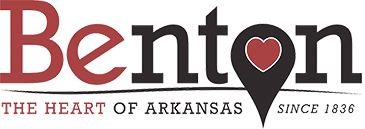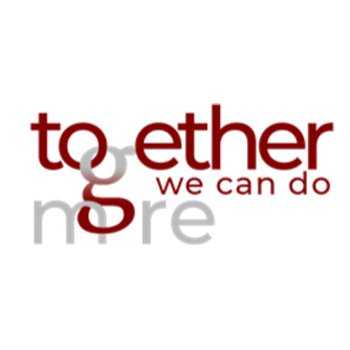Family Disaster Kit
Family Disaster Preparation Kit
Disasters happen anytime and anywhere, and when disaster strikes, you may not have much time to respond. A highway spill or hazardous material could mean evacuation. A winter storm could confine your family at home. An earthquake, flood, tornado, or any other disaster could cut water, electricity, and telephones for days. After a disaster, local officials and relief workers will be on the scene, but they cannot reach everyone immediately. You could get help in hours, or it may take days. Would your family be prepared to cope with the emergency until help arrives? Your family will cope best by preparing for disaster before it strikes. One way to prepare is by assembling a Disaster Supplies Kit. Once disaster hits, you won't have time to shop or search for supplies, but if you've gathered supplies in advance, your family can endure an evacuation or home confinement.
Prepare Your Kit
- Review the checklist below.
- Gather the supplies that are listed. You may need them if your family is confined at home.
- Place the supplies you'd most likely need for an evacuation in an easy-to-carry container. These supplies are listed with an asterisk (*).
- There are six basics you should stock for your home: water, food, first aid supplies, clothing and bedding, tools and emergency supplies, and special items. Keep the items that you would most likely need during an evacuation in an easy-to carry container. Suggested items are marked with an asterisk (*).
Possible Containers Include
- A large, covered trash container
- A camping backpack
- A duffle bag
Water
- Store water in plastic containers such as soft drink bottles. Avoid using containers that will decompose or break, such as milk cartons or glass bottles. A normally active person needs to drink at least two quarts of water each day. Hot environments and intense physical activity can double that amount. Children, nursing mothers, and ill people will need more.
- Store one gallon of water per person per day.
- Keep at least a three-day supply of water per person (two quarts for drinking, two quarts for each person in your household for food preparation/sanitation).
Food
- Store at least a three-day supply of non-perishable food. Select foods that require no refrigeration, preparation or cooking, and little or no water. If you must heat food, pack a can of sterno. Select food items that are compact and lightweight. Include a selection of the following foods in your Disaster Supplies Kit:
- Ready-to-eat canned meats, fruits, and vegetables
First Aid Kit
- Assemble a first aid kit for your home and one for each car. A first aid kit should include:
- Sterile adhesive bandages in assorted sizes
- Assorted sizes of safety pins
- Cleansing agent/soap
- Latex gloves (2 pairs)
- Sunscreen
- 2-inch sterile gauze pads (4-6)
- 4-inch sterile gauze pads (4-6)
- Triangular bandages (3)
- Non-prescription drugs
- 2-inch sterile roller bandages (3 rolls)
- 3-inch sterile roller bandages (3 rolls)
- Scissors
- Tweezers
- Needle
- Moistened towelettes
- Antiseptic
- Thermometer
- Tongue blades (2)
- Tube of petroleum jelly or other lubricant
Non-Prescription Drugs
- Aspirin or non-aspirin pain reliever
- Anti-diarrhea medication
- Antacid (for stomach upset)
- Syrup of Ipecac (use to induce vomiting if advised by the Poison Control Center 800-222-1222)
- Laxative
- Activated charcoal (use if advised by the Poison Control Center 800-222-1222)
For Baby
- Formula
- Diapers
- Bottles
- Powdered milk
- Medications
For Adults
- Heart and high blood pressure medication
- Insulin
- Prescription drugs
- Denture needs
- Contact lenses and supplies
- Extra eye glasses
Clothing and Bedding
- Include at least one complete change of clothing and footwear per person.
- Sturdy shoes or work boots
- Rain gear
- Blankets or sleeping bags
- Hat and gloves
- Thermal underwear
- Sunglasses
Tools and Supplies
- Mess kits, or paper cups, plates, and plastic utensils
- Emergency preparedness manual
- Battery-operated radio and extra batteries
- Flashlight(s) or lantern(s) and extra batteries
- Cash or traveller’s checks, change
- Non-electric can opener, utility knife
- Fire extinguisher: small canister ABC type
- Tube tent
- Pliers
- Tape
- Compass
- Matches in a waterproof container
- Aluminium foil
- Plastic storage containers
- Signal flare
- Paper, pencil
- Needles, thread
- Medicine dropper
- Shut-off wrench, to turn off household gas and water
- Whistle
- Plastic sheeting
- Map of the area (for locating shelters)
Special Items
- Remember family members with special requirements, such as infants and elderly or disabled persons
- Don’t forget your pets, and any food, medication or housing needs for them
Entertainment
- Games and books
Sanitation
- Toilet paper, towelettes
- Soap, liquid detergent
- Feminine supplies
- Personal hygiene items
- Plastic garbage bags, ties (for personal sanitation uses)
- Plastic bucket with tight lid
- Disinfectant
- Household chlorine bleach
Important Family Documents
- Keep these records in a waterproof, portable container:
- Will, insurance policies, contracts deeds, stocks and bonds
- Passports, social security cards, immunization records
- Bank account numbers
- Credit card account numbers and companies’ contact #s
- Inventory of valuable household goods, important telephone numbers
- Family records (birth, marriage, death certificates)
- Store your kit in a convenient place known to all family members. Keep a smaller version of the Disaster Supplies Kit in the trunk of your car.
- Keep items in airtight plastic bags. Change your stored water supply every six months so it stays fresh. Replace your stored food every six months. Re-think your kit and family needs at least once a year. Replace batteries, update clothes, etc.
- Ask your physician or pharmacist about storing prescription medications.
Important Links
- Federal Emergency Management Agency
- Arkansas Department of Emergency Management
- American Red Cross
- National Weather Service
- Arkansas Department of Health
- Arkansas Department of Environmental Quality
- Central Arkansas ARES/RACES
- READY.GOV/U.S. Department of Homeland Security
- Are You Ready? An In-depth Guide to Citizen Preparedness


